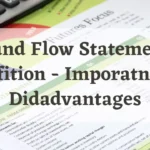Trial balance is an important statement prepared under the double-entry system. The fundamental principle of the double-entry system is that for every amount of debt, there is an equal amount of credit or vice versa.

This principle provides a check on the arithmetical accuracy of the recordings of financial transactions in different books such as the journal and the ledger. Such a check can be performed by preparing a statement called a trial balance.
This principle provides a check on the arithmetical accuracy of the recordings of financial transactions in different books such as the journal and the ledger. Such a check can be performed by preparing a statement called a trial balance.
Meaning and definition of trial balance
The trial balance is a statement prepared with debit and credit totals or balances of all ledger accounts on a particular date. Since the trial balance is prepared on the basis of the double-entry principle, i. e. For every debit, there is a corresponding credit and vice versa, the total of the debit column is always equal to the total of credit a total of the trial balance. This feature of the trial balance facilitates checks on the arithmetical accuracy of the recordings of financial transactions in the journal and ledger.
Definition of trial balance
“Trial balance is the list of debit and credit balances, taken ort form ledger; it also includes the balance of cash and bank taken from cash book.” – R. N. Carter
William pickles “The statement prepared with the help of ledger balances, at the end of the financial year to find out whether debt total agrees with credit total is called a trial balance.”
It is clear from the above definitions that the trial balance is a statement that is prepared by using the debit and credit totals or balances of all ledger accounts with a view to ascertaining the arithmetic accuracy of the recordings of the financial transactions of the business. Trial balance is prepared after closing all the ledger accounts and drawing balances therefrom at a certain date.
All the debit and credit total or balances rearranged in the debit and credit column together with the credit columns agree. If the two total of the trial balance agrees, it is assumed that recordings of financial transactions in the journal and ledger are arithmetical if accurate. The trial balance also b used to prepare the final accounts of the business.




